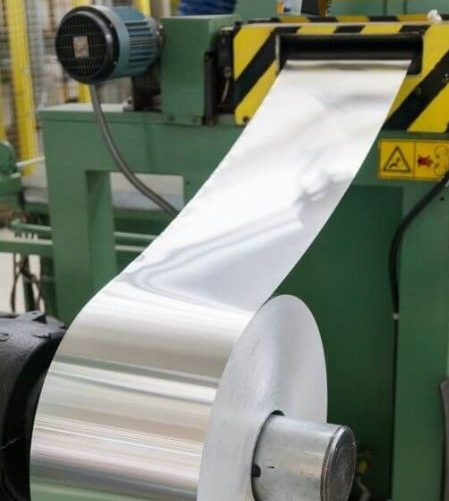Exactly How Metal Stamping Transforms Manufacturing Efficiency
Wiki Article
Steel Stamping Innovations: Elevating Manufacturing Processes for Superior Outcomes
In the realm of making procedures, metal marking has actually long been a cornerstone method for generating a variety of precision components. With the relentless march of technological improvement, the landscape of steel stamping is undergoing a substantial makeover.Development of Metal Stamping Methods

Additionally, innovations in product science have led to the advancement of high-strength alloys that can now be effortlessly marked right into complex forms, satisfying a wider series of industrial applications. The combination of robotics and expert system has even more maximized the marking procedure by enhancing rate and precision while reducing the risk of human error.

Effect of Advanced Products
Have innovative products transformed steel marking procedures substantially in the production market? The response is a resounding yes (Metal Stamping). The assimilation of sophisticated materials has actually changed metal stamping, making it possible for producers to attain greater precision, boosted effectiveness, and boosted product quality. By using products such as high-strength alloys, progressed compounds, and innovative layers, metal marking procedures can now generate elements that are lighter, more powerful, and more sturdy than in the past.These sophisticated products offer remarkable mechanical residential or commercial properties, rust resistance, and thermal stability, enabling producers to satisfy the needs of modern sectors such as aerospace, automobile, and electronics. Furthermore, making use of innovative products in metal marking has actually facilitated the production of complicated geometries and complex layouts that were formerly unattainable through standard techniques.
In addition, the execution of advanced products has actually brought about reduced material waste, reduced manufacturing prices, and much shorter lead times, making steel marking procedures a lot more cost-effective and lasting. As innovation proceeds to development, the effect of sophisticated products on metal marking procedures is expected to drive additional advancement and improve the competition of makers in the global market.
Automation in Metal Stamping
The evolution of steel marking processes driven by the combination of innovative products has actually set the stage for substantial improvements in automation within the manufacturing sector. Automation in metal stamping has actually reinvented production processes, improving effectiveness, precision, and total outcome quality. Via the application of robotics, sensing units, and computer-controlled systems, tasks that were once hand-operated and lengthy can currently be performed with unequaled speed and precision.Automation in metal marking not just speeds up manufacturing rates but likewise guarantees uniformity in the manufacturing process. By decreasing human intervention, the threat of errors is significantly lowered, bring about higher degrees of product harmony and reliability. Furthermore, automation allows manufacturers to take on complicated marking tasks that would certainly be unwise or tough to accomplish by hand.
Furthermore, automation in steel marking adds to a safer working atmosphere by reducing the requirement for staff members to involve in repeated or unsafe jobs - Metal Stamping. This shift in the direction of automation not just improves performance but likewise leads the means for the future of production, where innovation plays a main duty in driving operational excellence
Quality Assurance and Examination Systems
With a focus on accuracy and integrity, quality control and evaluation systems play a critical role in making sure product excellence in metal stamping processes. These systems are created to check every phase of production, from product assessment to the last see here item, to ensure that all elements satisfy the needed requirements. By carrying out innovative modern technologies such as optical examination systems, coordinate gauging equipments (CMM), and automated gauging equipment, producers can spot even the smallest inconsistencies in measurements, surface area top quality, and general stability of stamped parts.
Sustainability Practices in Metal Stamping
Structure upon the structure of precision and reliability developed with quality assurance and inspection systems, the integration of lasting techniques in steel marking procedures is significantly ending up being a focal factor for producers seeking to minimize ecological influence and optimize resource application. Sustainability practices in steel marking encompass a variety of efforts targeted at lowering waste generation, energy intake, and greenhouse gas discharges throughout the production process.One key facet of sustainability in metal stamping is the adoption of environmentally friendly materials and modern technologies that advertise recyclability and waste decrease. By utilizing recycled products and implementing energy-efficient equipment, manufacturers can reduce their carbon footprint and contribute to an extra lasting production cycle. Additionally, optimizing production procedures to reduce material waste and power usage not only profits the environment yet also leads to set you back savings for companies in the future.
Furthermore, the application of lasting practices in metal marking can boost brand credibility and attract ecologically conscious customers. As sustainability proceeds to obtain value in the manufacturing industry, integrating environment-friendly campaigns right into metal marking procedures is necessary for long-lasting success and competition in the marketplace.
Verdict
Finally, metal stamping methods have significantly other evolved over time, integrating sophisticated materials and automation to improve producing procedures. Quality control and evaluation systems play an essential duty in ensuring premium outcomes, while sustainability practices are increasingly being executed to reduce environmental influence. These technologies in steel marking have reinvented the industry, causing extra lasting and reliable manufacturing approaches for various markets.Metal marking, once a manual and labor-intensive process, has actually changed right into an extremely automated and innovative technique of shaping steel sheets into numerous forms and layouts.Have sophisticated materials transformed metal marking processes dramatically in the manufacturing sector? By making use of products such as high-strength alloys, advanced composites, and ingenious finishes, steel stamping processes can currently create elements that are lighter, stronger, and much more durable than ever before.
The evolution of metal marking processes driven by the combination of innovative materials has established the phase for substantial developments in automation within the production market.In conclusion, steel stamping methods have actually considerably progressed over time, integrating advanced materials and automation to boost making processes.
Report this wiki page